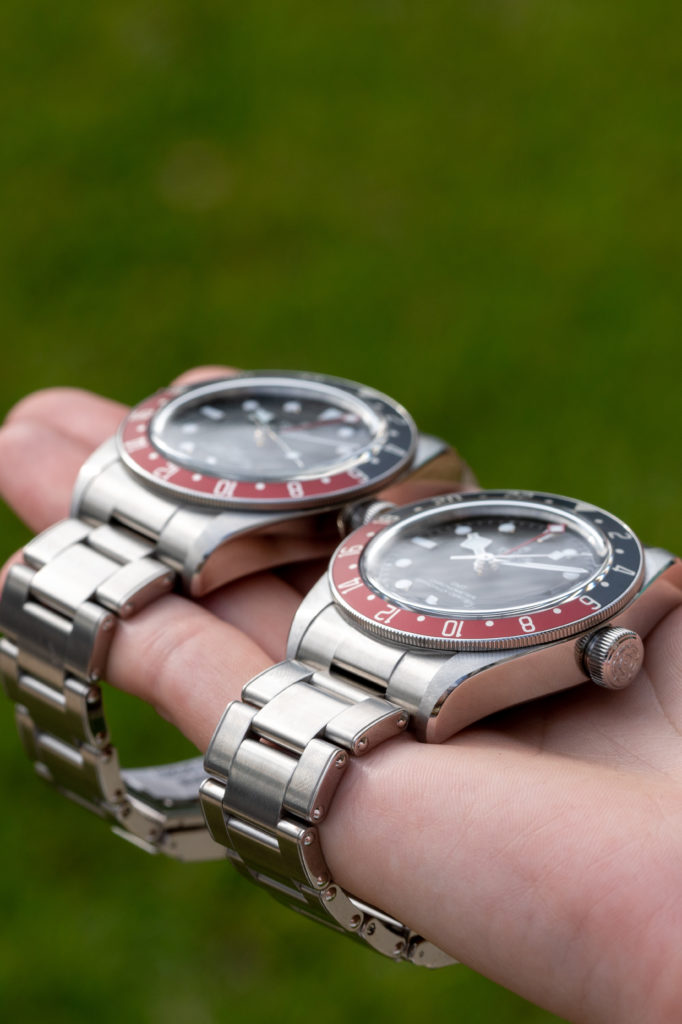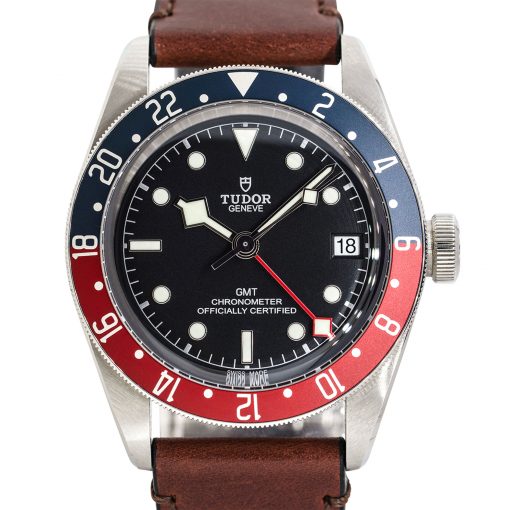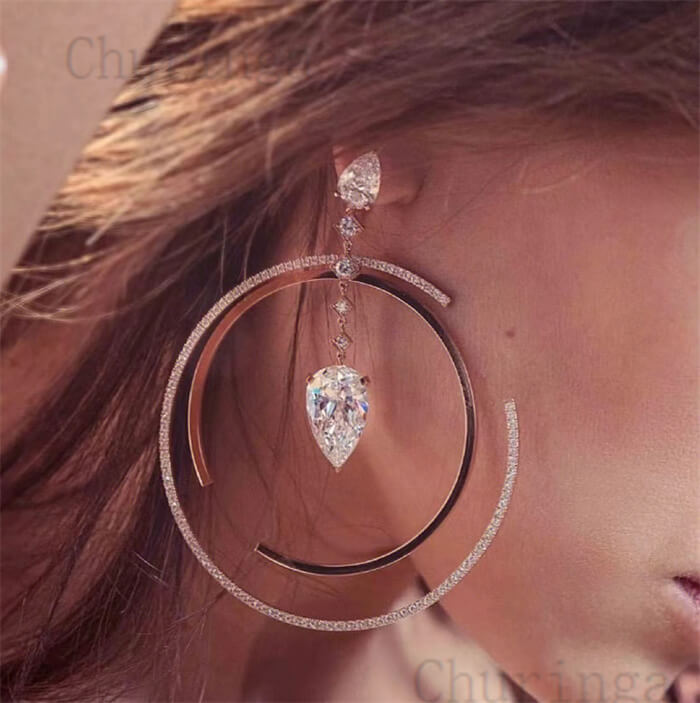Tudor wristwatches are also known as the only sister brand of Rolex. This is as the Tudor watchmaking brand gives you those celebrated Rolex aesthetics and design. However, a Tudor watch does this at a more affordable cost.
Moreover, these Tudor wristwatches are prolific time tools that deliver quality as well as its elder sibling, Rolex. Tudor as a brand are popular for their high-quality timepieces. First, these timepieces were products of third-party movements. But, in recent times, they now deliver Tudor movements made by the brand.
In addition, Tudor partners with other Swiss brands. Some of them include:
- ETA
- Valjoux
- Breitling
These brands make the majority of their movements. So, most of their wristwatches feature these movements. Originally, Tudor was relatively regarded as an inexpensive alternative that only utilized third-party movements.
Nonetheless, Tudor presently has greatly exceeded this status. Now, the brand continues to earn significant recognition for its time tools.
In this comprehensive review, we will go through:
- Tudor’s introduction
- Their historical journey to stardom
- Their current resurgence in the watchmaking world.
The Tudor Watchmaking Brand Earning A Name For Itself
Alt-Image: Grand designs from the Tudor watchmaking brand
The whole journey began with Hans Wilsdorf, the father of the Rolex and Tudor watchmaking brand. Hans realized that several watch buyers needed Rolex watches. However, they couldn’t pay for them.
Hence, he chose to sell watches that featured adjusted off-the-shelf movements. These Tudor wrist watches also featured high-quality cases designed and created in-house.
Subsequently, the first edition of Tudor wrist watches were mainly rectangular in shape. These watches were sometimes created with “Rolex” sign featured on their dials. Due to the fact that this was a recent brand, Hans Wilsdorf sought to grow its prestige by relating it with his more popular collections.
As a result, these first Tudor wrist watches paraded a unique logo. The logo comprised the name Tudor with a long top bar on the letter “T.”
Consequently, he was soon convinced that the brand existed now with a growing reputation. Then, Hans Wilsdorf captioned the Tudor name and logo very distinctly.
Welcome The Oyster Prince Tudor Watch
By the end of World War II, Hans Wilsdorf established a distinct company for the TUDOR watchmaking brand. At that time, the emblem on Tudor wrist watches was the Tudor rose. That was also the emblem of the eponymous English dynasty fixed within a shield.
In no distant time, the company introduced one of its more celebrated watch collections, the Oyster Prince. Oyster Prince came as a result of the Oyster case it used. The Oyster case is a powerful, waterproof case initially developed by Hans Wilsdorf for Rolex.
In total, Tudor released these self-winding Oyster Prince timepieces in the early 1950s. 26 of these watches went with the British Royal Navy on their 1952-1954 scientific exploration to Greenland.
Certainly, these Oyster Prince watches helped greatly during the exploration. These watches were strong, reliable and precise. They delivered efficiently even in difficult situations. Moreover, this expedition was a sort of testing ground for these Tudor wristwatches. This was the kind of test such a brand needed at that stage of their development.
Impacts Of The Oyster Prince On The Reputation Of The Tudor Watchmaking Brand
The impacts of the Oyster Prince did a lot of good to the Tudor watchmaking brand at that time. In fact, there was one satisfied Royal Engineers member on the Greenland expedition for 13 months. He had a few words to say to the company about his adventures.
This Royal Engineer, Captain JD Walker, completed numerous fierce bodily duties while donning his watch. JD Walker dug, constructed and swam through frigid waters and snow. All the while, he had his Oyster Prince wristwatch on.
Repeatedly, the watch and wearer went through weathers of -50 degrees Fahrenheit (-45°C) while performing these tasks. In addition, Captain Walker and others on the exploration tested the watches for precision. These tests were against time signals from England.
At the end of it all, they discovered that the timepieces were still accurate. In fact, they did not need winding all through the period of the exploration. Eventually, the British military bestowed glowing praises.
With that opportunity, Tudor seized the chance to emphasize the Oyster Prince’s sturdiness. Hence, when the Tudor watchmaking brand had their next advertising campaign, they maximized this momentum.
The brand took the watch through numerous publicized stamina tests. One of such tests was a stonecutter working with a pneumatic drill and the watch on for three months. There was another test where a coal miner swung his own timepiece for a total of 252 hours. All along, he wore the Oyster Prince.
Tudor Launches A New Set Of Dive Watches

Subsequently, reproducing the Rolex Submariner, Tudor launched the Oyster Prince Submariner collection. These Tudor diver’s watches strived to deliver similar high legibility and depth resistance. However, this watchmaker sought to offer this at a reduced cost compared to the Rolex.
To achieve this, these Tudor watches featured huge, brilliant indices that indicate the hours. More so, several styles of high-legibility hands came up all through the early years of these timepieces.
Additionally, indices were still bright, making the most of the underwater clarity. Similarly, a slightly-convex, pressure-resistant Plexiglas crystal adds additional legibility to these markers under water.
Note: The earliest model, the 1954 Oyster Prince Submariner 7922, employed an adjusted Fleurier 350 movement. This movement is also known as the TUDOR 390.
Thereafter, models released boosted the case design. This is in recognition of how often divers’ need enhanced strength and stability.
A good example is the movement of divers swimming through rocky patches and debris. This might damage or sever the crowns of these Tudor wristwatches.
Thus, in the Submariner 7928, we saw two metal guards on the case to defend the crown from both ends. With that, you get to see a sleeker view. Plus, this watch is much less prone to catch on rock protrusions confronted underwater.
The Tudor Watchmaking Brand In The 1970s And After
A change occurred to the logo of the Tudor watchmaking brand in 1969. That year, the brand simplified its logo. The rose part was out and all we had was the shield. Well, the shield worked well with the brand’s priority placed on military-grade strength and steadfastness.
First off, Tudor utilized this on the Oyster Prince Submariner 7016. It appeared together with its legendary feature, the huge, square “snowflake” hour marker.
Meanwhile, Tudor put in this feature because of French Navy divers’ pleas to make the markers more legible underwater. Hence, this Tudor watch also starred a flat, instead of a domed, acrylic crystal. This was a thicker addition compared to those featured on the older editions.
In addition, Tudor also built “left-handed” models of the Submariner timepieces. These were Tudor wristwatches specially made for the Marine Nationale. These watches are worn on the right hand.
Interestingly, this version of the watch was a response to the request made by a left-handed officer. Thanks to it, the case got reversed. Hence, the crown leaned more to the left of the dial.
The Tudor Watchmaking Brand: The Change And Resurgence
The Tudor watchmaking brand had a shakeup in the early 2000s. The brand withdrew from Tudor wristwatches from the UK and US markets. This was due to the decreasing fame in those areas of the world. While the brand was on this break, the company plotted its massive resurgence.

First off, Tudor explored different ways to solidify their place as a watchmaker. The brand did this without the need to be in an alliance with prominent Rolex lines. Hence, they paid attention to the slightest details that made the classic Tudor wristwatches. Also, they found out what made their most-beloved timepieces the classics they are presently.
The Addition Of The Fabric Strap
One of the consequences of that period was the fabric strap. This strap was an outstanding addition especially for military watch lovers. In no time, this type of strap became a prominent part of the Tudor wristwatches.
Therefore, the brand began to include them in most of their timepieces. That marked the incorporation of the fabric strap into the Tudor identity.
Contrary to their predecessors, these fresh watch bands were not a product made from parachute straps. Instead, Tudor employed the services of an expert in adorning fabrics. The brand partnered with Julien Faure, a third-generation passementier. Julien’s workshop, procedures, and age-long looms became prominent in the 19th century.
The Importance Of The Tudor North Flag
Probably, the most substantial difference in this new period for Tudor was the introduction of in-house movements. The majority of the brand’s history portrays them as popular and renowned for their off-the-shelf movements.
Leading to this period, the big controversy was whether or not these third-party movements were worth the lower cost. Thus, this was the best move this watchmaking could take to revamp its image.
More so, this new in-house line of movements had its first release in the North Flag timepiece. For this 28-jewel, bidirectional self-winding movement, we welcomed the glorious comeback of the brand. Tudor was finally back to the British and American watch markets.
Additionally, the North Flag boldly exhibits the “Manufacture.” You can see this emblem through a sapphire crystal positioned on the caseback. And, with the brand name, “Tudor” fully engraved on the back of the movement, all doubts had to rest.
That visual representation simply rids all suspicions. It affirms that this watch is in-house through and through.
Likewise, the MT5621 caliber movement featured in this model is a certified chronometer by the COSC (Contrôle Officiel Suisse des Chronomètres).
Plus, there is a 70-hour power reserve embedded in this watch. So, it will keep running over a whole weekend elegantly positioned on its owner’s wrist.
That is not all. The North Flag, while maintaining distinctive Tudor makeup, utilizes the most solid materials. Some of them include the super-hard ceramics and scratch-resistant sapphire.
And for the name of these Tudor wristwatches. It is a recognition of the 1952 British exploration to Greenland. The same trip that brought the brand the fame and recognition it enjoys today.
Does this appear like another affiliation? Yes, it is. But it is not one idle affiliation. The North Flag comes fully furnished and ready for an Arctic expedition. The black dial and matte steel case reduce glare to the barest minimum. That alone is crucial for exploring icy northern latitudes lil the Arctic.
Tudor Pelagos Revive Tudor Dive Watch Classics
Thanks to the Pelagos, the Tudor watchmaking brand goes back to the dive watches. These were the same dive watches that received praises from the US Navy and the French Marine Nationale.
- On the Pelagos you can find the popular “snowflake” hour hand. This hour hand emerged with 1969’s Oyster Prince Submariner 7016 timepiece.
- Furthermore, another element adopted from former Submariners is the square crown guards. This one was a feature on the 1959 Oyster Prince Submariner 7928.
- Also, from the North Flag, the Tudor Pelagos featured an incredibly durable titanium-and-ceramic bezel. They came in for the Plexiglas once featured on older timepieces.
- In addition, this watch can effortlessly handle depths to as deep as 500 meters. That is five times what its predecessors offered.
- Finally, you will also notice the watch’s deeper pressure tolerance. This is thanks to the addition of a helium escape valve set at the nine o’ clock position
In all, the Pelagos adopts classic Tudor dive watch aesthetics. This time, the watch takes it to new heights. That is only possible thanks to its use of top-quality materials. Plus, its application of an in-house MT5612 movement.
Ultimately, this watch pays tributes to the 1980s French Marine Nationale versions of the Submariner. That come from its readily-available left-handed edition.
Conclusion

So far, you have walked through the journey of the Tudor watchmaking brand through the lens of various Tudor wristwatches. Each of these wristwatches exemplify an era in the development of this brand’s pedigree.
Some of these Tudor wristwatches are:
- The Oyster Prince
- The Oyster Prince Submariner
- The Tudor wristwatch with the fabric strap
- The North Flag
- The Pelagos
- The Tudor Bay
From all of these timepieces, we can view the continuous growth and evolution of this watchmaking brand. And, truly, Tudor is no longer that little sister it used to be. In fact, the brand manages to continually tell the time in grand style.
Ten articles before and after
Diamonds and Donuts 2021 – Diamonds By Raymond Lee
DIVE WRISTWATCHES: COMPARING THE ROLEX SUBMARINER AND THE TUDOR BLACK BAY – Diamonds By Raymond Lee
Meteorite Dial Watches by Rolex – Diamonds By Raymond Lee
Recap Of The Diamonds and Donuts Car Show 2021 – Diamonds By Raymond Lee
Aquamarine Jewelry – Diamonds By Raymond Lee
Breguet Timepieces for Quality and Style – Diamonds By Raymond Lee
RADIANT-CUT DIAMONDS: SPARKLES IN VARIETIES – Diamonds By Raymond Lee
SWISS WRISTWATCHES WITH THE BEST POWER RESERVE – Diamonds By Raymond Lee
Ballon Bleu Watches by Cartier – Diamonds By Raymond Lee
WATER RESISTANCE AT ITS BEST: SEA DWELLER VS SUBMARINER DIVE WATCHES – Diamonds By Raymond Lee

